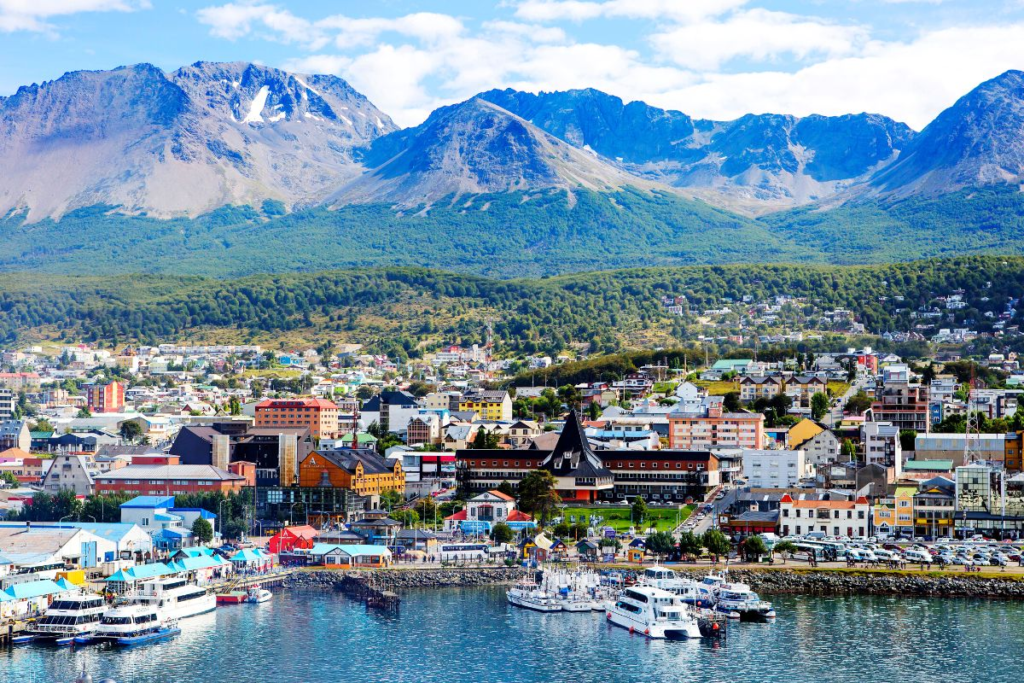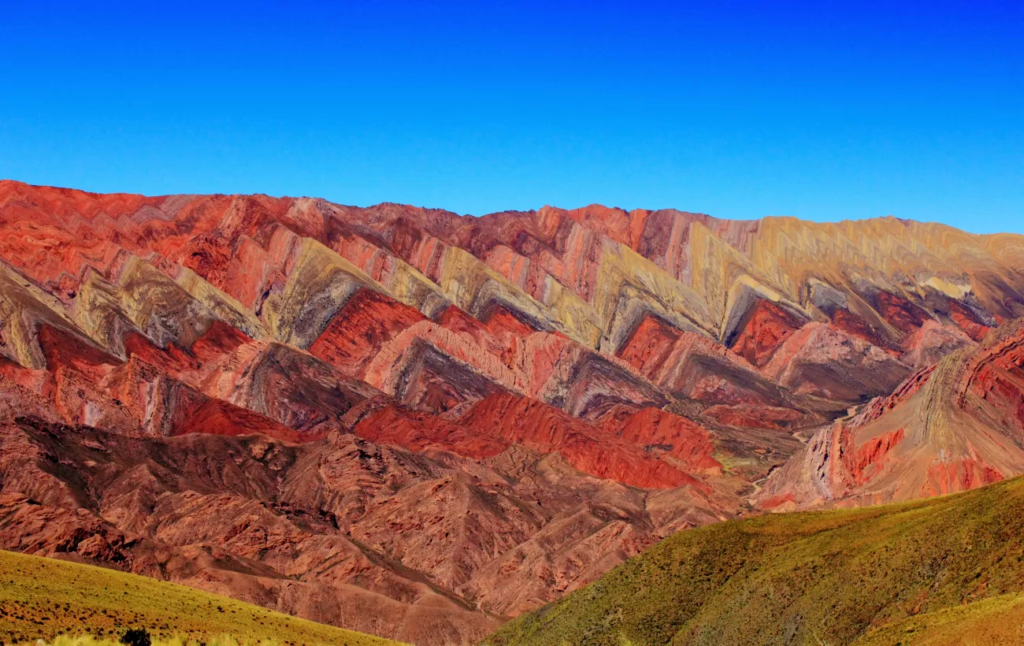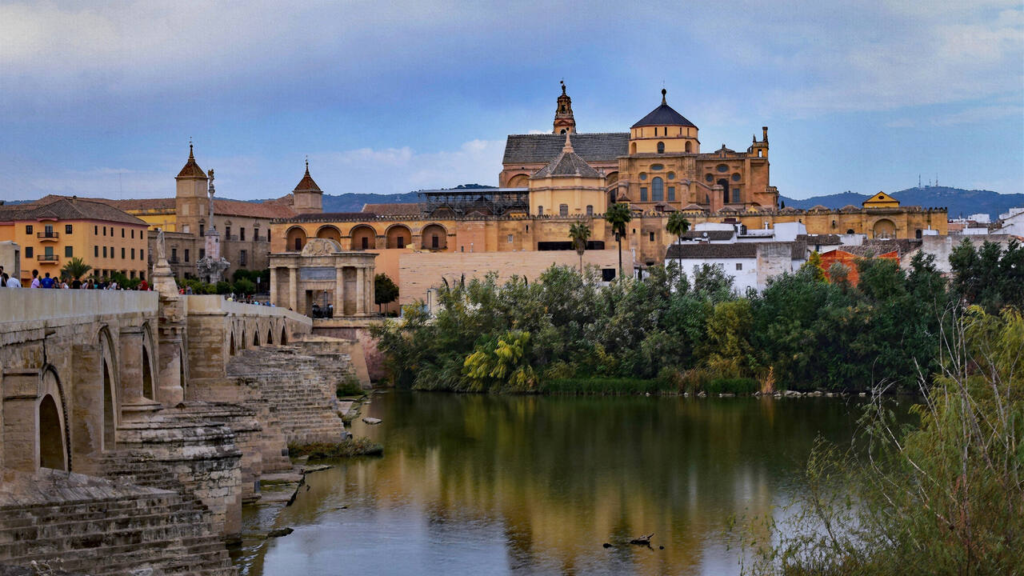Argentina, the second-largest country in South America, is a land of dramatic contrasts and stunning natural beauty. From the icy landscapes of Patagonia to the bustling city life of Buenos Aires, Argentina offers a diverse array of experiences that captivate every traveler. Known for its vibrant culture, rich history, and breathtaking landscapes, Argentina is a must-visit destination for those seeking adventure and cultural immersion.
Table of Contents
Geography
Argentina covers approximately 2.78 million square kilometers, making it the eighth-largest country in the world. Its diverse geography includes everything from the Andes Mountains in the west to the Pampas grasslands in the central region. The country extends from the subtropical north to the subantarctic south, showcasing a range of climates and ecosystems.
The Andes Mountain range forms Argentina’s western border with Chile, featuring the highest peak in the Western Hemisphere, Aconcagua. The eastern part of the country includes the fertile Pampas, which are essential to Argentina’s agricultural sector. To the south, the Patagonian steppe offers rugged landscapes, glaciers, and dramatic fjords, while the northern region features subtropical rainforests.
Argentina’s extensive Atlantic coastline stretches for about 4,700 kilometers, offering a range of coastal environments, from sandy beaches to rugged cliffs. The country is also home to the vast Gran Chaco region and the impressive Iguazu Falls, one of the largest waterfall systems in the world.
States of Argentina
Argentina is divided into 23 provinces and 1 autonomous city, Buenos Aires, which serves as the capital. The provinces function similarly to states in other countries.
| No. | Province | Capital |
|---|---|---|
| 1. | Buenos Aires | La Plata |
| 2. | Catamarca | San Fernando del Valle de Catamarca |
| 3. | Chaco | Resistencia |
| 4. | Chubut | Rawson |
| 5. | Córdoba | Córdoba |
| 6. | Corrientes | Corrientes |
| 7. | Entre Ríos | Paraná |
| 8. | Formosa | Formosa |
| 9. | Jujuy | San Salvador de Jujuy |
| 10. | La Pampa | Santa Rosa |
| 11. | La Rioja | La Rioja |
| 12. | Mendoza | Mendoza |
| 13. | Misiones | Posadas |
| 14. | Neuquén | Neuquén |
| 15. | Río Negro | Viedma |
| 16. | Salta | Salta |
| 17. | San Juan | San Juan |
| 18. | San Luis | San Luis |
| 19. | Santa Cruz | Río Gallegos |
| 20. | Santa Fe | Santa Fe |
| 21. | Santiago del Estero | Santiago del Estero |
| 22. | Tierra del Fuego | Ushuaia |
| 23. | Tucumán | San Miguel de Tucumán |
History
Argentina’s history is a rich narrative of indigenous cultures, Spanish colonization, and its path to independence. Before the arrival of Europeans, the land was inhabited by various indigenous groups such as the Mapuche, Quechua, and Guarani. These communities had developed sophisticated societies and cultures long before the arrival of Spanish explorers.
In the early 16th century, Spanish conquistadors arrived, leading to the colonization of the region. Buenos Aires was founded in 1536, and the Spanish influence dominated the region for nearly three centuries. During this period, the economy was largely based on agriculture and cattle ranching, with the Spanish establishing a colonial system that would significantly influence Argentina’s development.
Argentina declared its independence from Spain on May 25, 1810, and the country went through a series of conflicts and political changes before achieving full sovereignty in 1816. The 19th and 20th centuries saw significant social and economic transformations, including periods of dictatorship and democratic governance. Today, Argentina is known for its dynamic culture, strong economic sector, and active role in global affairs.
Must-Visit Destinations
1. Buenos Aires

Buenos Aires, the capital of Argentina, is a vibrant metropolis known for its European-style architecture, rich cultural scene, and lively nightlife. The city is famous for its neighborhoods, such as Palermo and Recoleta, as well as landmarks like the historic Teatro Colón and the colorful La Boca district. Buenos Aires is also renowned for its tango music and dance, which are integral to its cultural identity.
2. Iguazu Falls

Straddling the border between Argentina and Brazil, Iguazu Falls is one of the most spectacular waterfall systems in the world. The falls consist of approximately 275 individual cascades, creating a stunning and powerful display of nature. The surrounding Iguazu National Park, a UNESCO World Heritage site, offers lush rainforests and diverse wildlife, making it a must-visit for nature enthusiasts.
3. Patagonia

Patagonia, spanning the southern regions of Argentina and Chile, is known for its dramatic landscapes, including glaciers, mountains, and fjords. Key highlights in Argentine Patagonia include the Perito Moreno Glacier, one of the few advancing glaciers in the world, and the rugged terrain of Los Glaciares National Park. Patagonia offers opportunities for outdoor activities such as trekking, ice climbing, and wildlife viewing.
4. Mendoza

Mendoza, located in the foothills of the Andes, is Argentina’s premier wine region. The area is renowned for its Malbec wines and offers scenic vineyards, charming wineries, and opportunities for wine tastings and tours. Mendoza is also a gateway to outdoor adventures, including skiing in the nearby Andes and exploring the stunning landscapes of the region.
5. Bariloche

San Carlos de Bariloche, often simply known as Bariloche, is a picturesque town located in the Argentine Lake District. Surrounded by mountains and lakes, Bariloche is known for its stunning natural beauty and outdoor activities. Visitors can enjoy skiing in the winter, hiking in the summer, and exploring the town’s Swiss-inspired architecture.
6. Ushuaia

Ushuaia, located at the southern tip of Argentina, is known as the “End of the World.” It is the southernmost city on the planet and serves as a gateway to Antarctica. Ushuaia offers breathtaking views of the surrounding mountains and Beagle Channel, as well as opportunities for excursions to nearby national parks and penguin colonies.
7. Salta

Salta, located in the northwest of Argentina, is known for its colonial architecture, vibrant cultural scene, and stunning natural surroundings. The city is a gateway to the scenic regions of the Calchaquí Valleys and the Salinas Grandes salt flats. Salta’s historic center, with its well-preserved buildings and lively markets, reflects the city’s rich heritage.
8. Córdoba

Córdoba, Argentina’s second-largest city, is known for its colonial architecture, vibrant student population, and cultural attractions. The city is surrounded by beautiful landscapes, including the Sierras de Córdoba mountains, which offer opportunities for hiking and outdoor activities. Córdoba’s historic buildings, such as the Jesuit Block, are recognized as a UNESCO World Heritage site.
9. El Calafate

El Calafate, located in southern Patagonia, is the gateway to Los Glaciares National Park. The town is known for its proximity to the Perito Moreno Glacier, one of the most accessible glaciers in the world. El Calafate offers stunning views of the glacier and the surrounding landscapes, with opportunities for boat tours and glacier trekking.
10. Tigre Delta

The Tigre Delta, located just north of Buenos Aires, is a unique network of waterways and islands. Visitors can explore the delta by boat, discovering charming riverside homes, lush vegetation, and picturesque canals. The area is known for its scenic beauty and offers a peaceful escape from the hustle and bustle of the city.
Culture
Argentina’s culture is a rich blend of European influences, indigenous traditions, and Latin American heritage. The country is renowned for its contributions to the arts, particularly in music and dance. Tango, a passionate and expressive dance form, originated in Buenos Aires and remains a central element of Argentine culture. The country’s musical heritage also includes folk music, classical compositions, and modern genres.
Spanish is the official language of Argentina, and the country’s cultural diversity is reflected in its cuisine, festivals, and traditions. Argentine cuisine features a mix of European and indigenous influences, with popular dishes including asado (barbecue), empanadas (savory pastries), and mate (a traditional tea-like drink). Argentine cuisine varies by region, with each area offering its own specialties and culinary traditions.
Festivals
Argentina is known for its vibrant festivals and cultural celebrations. The Buenos Aires Tango Festival, held annually, showcases the country’s rich tango heritage with performances, workshops, and competitions. This festival attracts dancers and enthusiasts from around the world, celebrating the elegance and passion of tango.
In addition to tango, Argentina hosts the Gualeguaychú Carnival, one of the largest and most colorful carnivals in South America. Held in the city of Gualeguaychú, the carnival features elaborate parades, samba music, and festive costumes. The event is a lively celebration of Argentine culture and attracts visitors from across the globe.
Economy
Argentina has a diverse economy driven by agriculture, industry, and services. The country is one of the world’s largest producers of agricultural products, including soybeans, wheat, and beef. The agricultural sector is a key driver of the Argentine economy, with exports playing a significant role in the country’s economic performance.
In addition to agriculture, Argentina has a developed industrial sector, including automotive manufacturing, textiles, and steel production. The country has faced economic challenges, including inflation and debt issues, but continues to be an important player in regional and global markets. Economic reforms and investment in infrastructure are central to Argentina’s efforts to promote growth and stability.
Cuisine
Argentine cuisine is known for its hearty and flavorful dishes, influenced by European, indigenous, and Latin American traditions. Asado, a style of barbecue, is a central element of Argentine cuisine, featuring a variety of meats cooked over an open flame. Empanadas, savory pastries filled with meat, cheese, or vegetables, are another popular dish enjoyed throughout the country.
The cuisine also includes Italian-inspired dishes such as pizza and pasta, reflecting Argentina’s strong Italian heritage. Mate, a traditional herbal drink made from the leaves of the yerba mate plant, is a cultural staple and is often enjoyed socially. Argentine cuisine offers a diverse range of flavors and dishes that reflect the country’s rich cultural tapestry.
Top Eight Most Famous Food








Interesting Facts
- Argentina is home to the highest peak in the Western Hemisphere, Aconcagua, which stands at 6,959 meters.
- Buenos Aires is known as the “Paris of South America” due to its European-style architecture and vibrant cultural scene.
- The tango dance originated in Buenos Aires in the late 19th century and is a UNESCO-recognized cultural heritage.
- Argentina is the world’s eighth-largest country, spanning a diverse range of climates and landscapes.
- The Iguazu Falls, shared with Brazil, consists of approximately 275 individual waterfalls.
- Argentina is one of the largest producers of wine in the world, with Malbec being its flagship variety.
- The country has over 20 national parks, showcasing its diverse natural beauty and wildlife.
- Argentina’s Patagonia region is known for its stunning glaciers, including the Perito Moreno Glacier.
- The national football team of Argentina has won the FIFA World Cup twice, in 1978 and 1986.
- Argentina is the birthplace of famous figures such as writer Jorge Luis Borges and revolutionary Ernesto “Che” Guevara.
Conclusion
Argentina is a land of extraordinary contrasts and captivating beauty. From the vibrant city life of Buenos Aires to the serene landscapes of Patagonia, the country offers a diverse range of experiences for travelers. With its rich cultural heritage, world-renowned cuisine, and stunning natural wonders, Argentina stands out as a top destination for those seeking adventure and cultural enrichment. Whether exploring its bustling cities, savoring its culinary delights, or immersing in its natural splendor, Argentina promises an unforgettable journey.
let’s enjoy few years on earth with peace and happiness….✍🏼🙏

